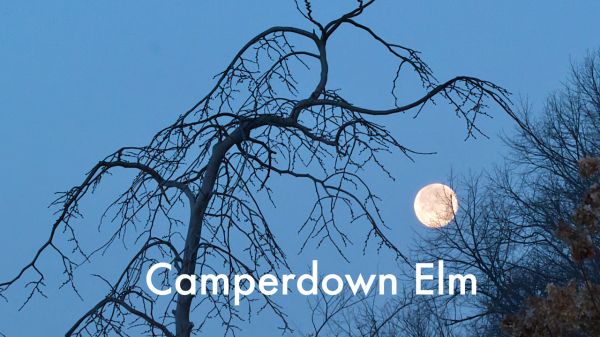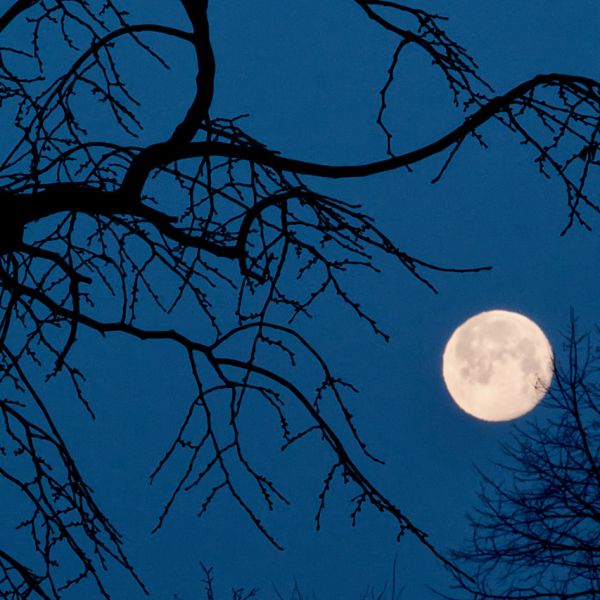History in the Moonlight: Reflections Through Generations

Written by Ada Takacs, board member of The Botanic Garden at Historic Barns Park in Traverse City, Michigan and retired Michigan Project Learning Tree Coordinator
In 1971, Stuart Roosa, command module pilot on Apollo 14, carried a small canister of tree seeds into space. On his return, after orbiting the moon, the seeds were germinated by the USDA Forest Service, and seedlings were distributed and grown around the country alongside Earth-bound control seedlings. Over the next few decades, these Moon Trees did not show any noticeable differences from the control trees, however, they served as a living monument to one of the earliest landings on the Moon.
To honor the 50th anniversary of Apollo 14, NASA partnered with the USDA Forest Service to recreate the Moon Trees project, but this time on the uncrewed Artemis I mission. The Forest Service provided five species of seeds (loblolly pine, Douglas-fir, giant sequoia, sycamore, and sweet gum) that were sent around the Moon as a payload on the Artemis I mission. The seeds journeyed 270,000 miles from Earth aboard the Orion spacecraft, returned to Earth, and were germinated and grown as seedlings in Forest Service nurseries. These seedlings are now being planted at public sites, as a way for people to learn about science and conservation.
Here’s the story of one of these Moon Trees planted at The Botanic Garden at Historic Barns Park in Traverse City, Michigan.
Moon Tree Stewards
Situated on the original working farm of the Northern Michigan Asylum in Traverse City, Michigan, The Botanic Garden is now a year-round sanctuary of environmental preservation, recreation, and education. Its 25 acres nurture the soul, enliven history, and promote Michigan’s natural beauty.
The Botanic Garden at Historic Barns Park has been on a journey that feels almost as far-fetched as the outer space journey of the Artemis I Moon Tree sycamore now planted here. Once the working farm of the Northern Michigan Asylum, the land fed up to 3000+ residents daily from the late 1800s until the farm closed in 1957. The property sat neglected and unkept until a grassroots group of local citizens resurrected the land and created the current space of hope and healing. The Garden offers free entry throughout the year and serves as a community hub for environmental preservation, recreation, and education. This year, 2024, is our 10th Anniversary of being open to the public. There is no better way to celebrate a place so rich in history than to be gifted an Artemis I Moon Tree Sycamore from our friends at NASA and the Forest Service. Our approximate 3-foot wonder has been planted on a picnic lawn near the “walled garden” that once served as a horse barn. It is lovingly being cared for and watered by dedicated volunteers.

Artemis I Moon Tree Sycamore from NASA and the Forest Service planted on a picnic lawn for all to enjoy. Photo credit: Ada Takacs
Our intent is to create educational programming around the tree that will highlight our community partners and span multiple generations. Two programs in the planning include: Pedal the Planets and Exploring Our Roots.
Pedal the Planets
A physics teacher, who is also a local artist, designed and installed a model of the solar system along our TART (Traverse Area Recreation Trail). The colorful system highlights the sun and each planet along with educational signage. The approximate 3-foot planets are scaled and placed in distance to the next planet along the trail. We will work with NORTE, a youth cycling program, to bike through the solar system and end up at the Moon Sycamore for an official “launch” of our Moon Tree programming. Our Little Free Library will be filled that evening with gently used books about Space, and each child will be encouraged to take one home.

The Little Free Library at the park will have books about Space. Photo credit: Ada Takacs
Exploring Our Roots
This is a generational gathering in conjunction with our Children’s Garden and the Seven Grandfathers Garden installation. Among the Anishinaabe people, the Teachings of the Seven Grandfathers demonstrates what it means to live a “Good Life.” They detail human conduct towards others, the Earth, and all of Nature.
One of our “Free Family Fun Days” will encourage multiple generations to join us for an evening in the Garden that will include a walk through our Seven Grandfather’s installation and end in reflections around the Moon Sycamore. Pre-selected grandparents will share their memories of the 1969 Moon landing, and a facilitated discussion will encourage participants to reflect on their thoughts and current interactions with the Moon. There are two retired astronauts who are affiliated with Traverse City. If either of them are available, they will be invited to share their stories as well.

A section of the garden is dedicated to the Teachings of the Seven Grandfathers, which demonstrates what it means to live a “Good Life.” Among the Anishinaabe people, they detail human conduct towards others, the Earth, and all of Nature. Photo credit: Steve Tavener

Photo of the Moon over the Firewise Garden (highest point at The Botanic Garden). Photo credit: Steve Tavener
We are currently in a capital campaign and searching for funding to convert a late 1800s dairy barn into an Education Center. Once this center is opened, we will be able to offer year-round programming.
The Moon Sycamore is a great addition to our living collection of more than 85 tree species on the property including many rare species and clones from famous and historic trees. The Moon sycamore is more than just a tree—it will add to the meaningfulness of our work and bring our community together as we continue our incredible journey into the future.



